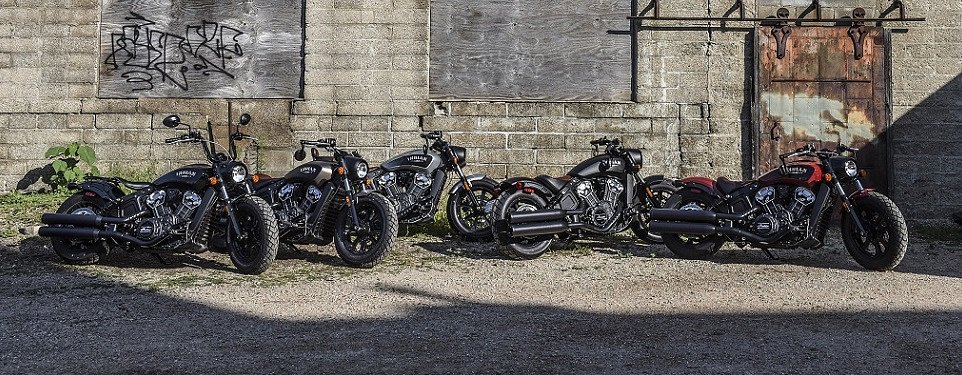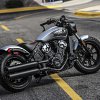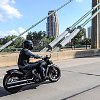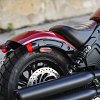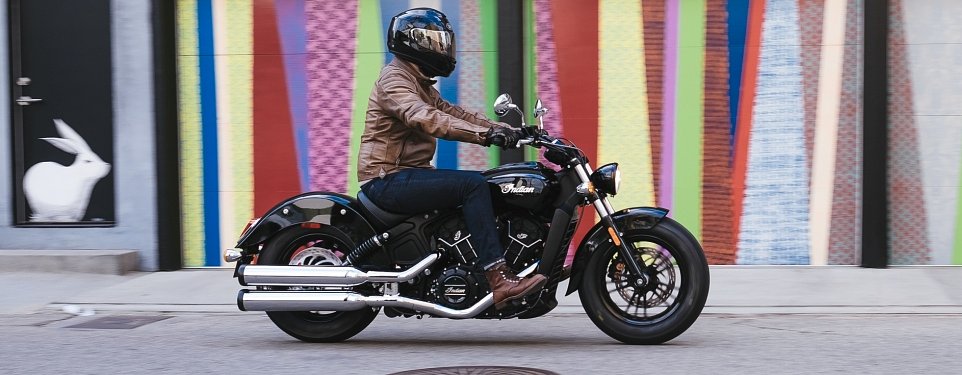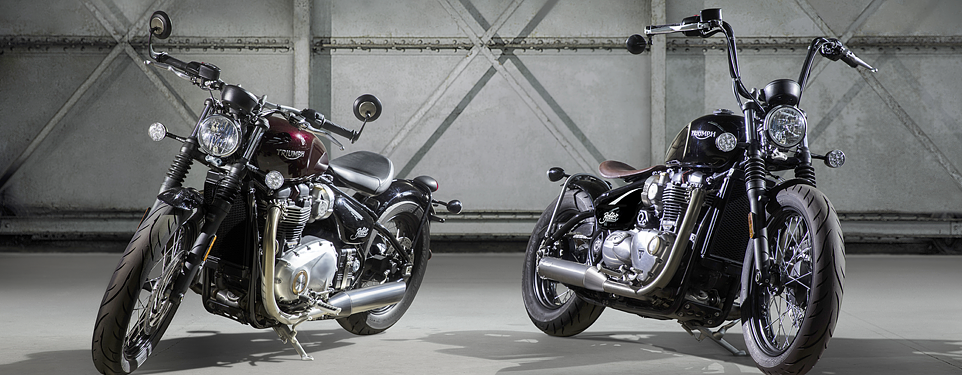This September, Indian will begin selling the Scout Bobber, the third version in the popular Scout line (see our reviews of the Scout and the Scout Sixty.)

The Bobber starts with the standard Scout and gets tracker bars, closer foot pegs, tires that are the same size but have blockier tread, a lower stance and lots of black. The price tag, $200 more than the Scout, is $11,499. The bike was launched last weekend during the X Games in Minneapolis at a swanky release party thrown with Maxim magazine.
Despite being unveiled in a room full of young fans of extreme sports who were dancing to RL Grime, the Scout Bobber is clearly aimed at an older crowd.
“Performance was not the first thing on our mind. (The audience) for this bike is a 40-to-50-year-old who wants to look cool bar hopping,” said an Indian marketing team member who worked on the bike.
Given the setting, that information seemed so surprising that I asked twice, just to make sure. Focus group research began in 2016 and key findings pointed to a desire for a mid-size, short-distance (under 50 miles), cool-looking bike. The bobber is largely a facelift of the Scout, using the same engine and frame, and geared towards attracting new riders.
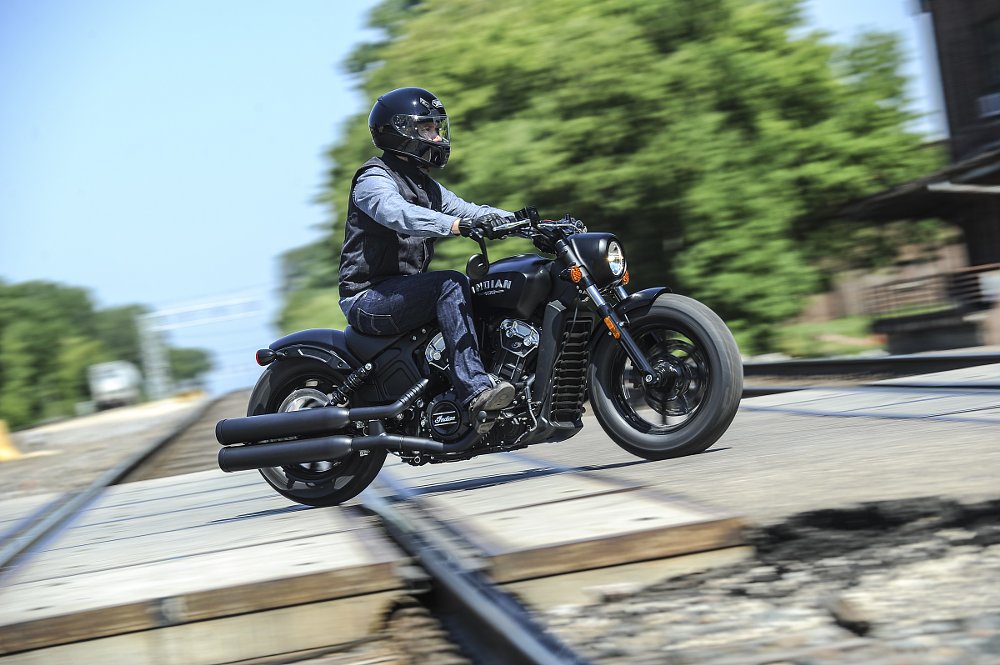
What's different on the Scout Bobber
The Scout Bobber weighs five pounds less and loses an inch of rear suspension travel (two inches versus three inches on the Scout). Front suspension travel stays the same but is cartridge type. The cut rear fender sits closer to the rear tire. Controls move closer to the rider by 1.5 inches. The lean angle drops to 29 degrees (from 31 degrees on the Scout).
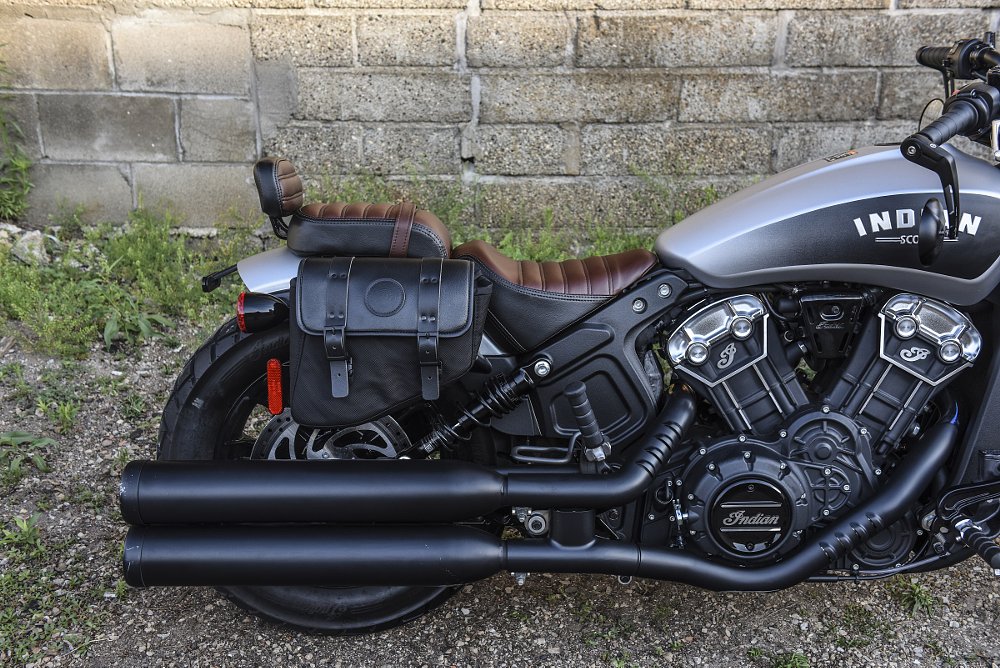
The bike has a new saddle and new luggage options, neither of which are geared toward long-distance travel. The rest of the changes are mainly aesthetic. In general, things got blacker and slimmer.
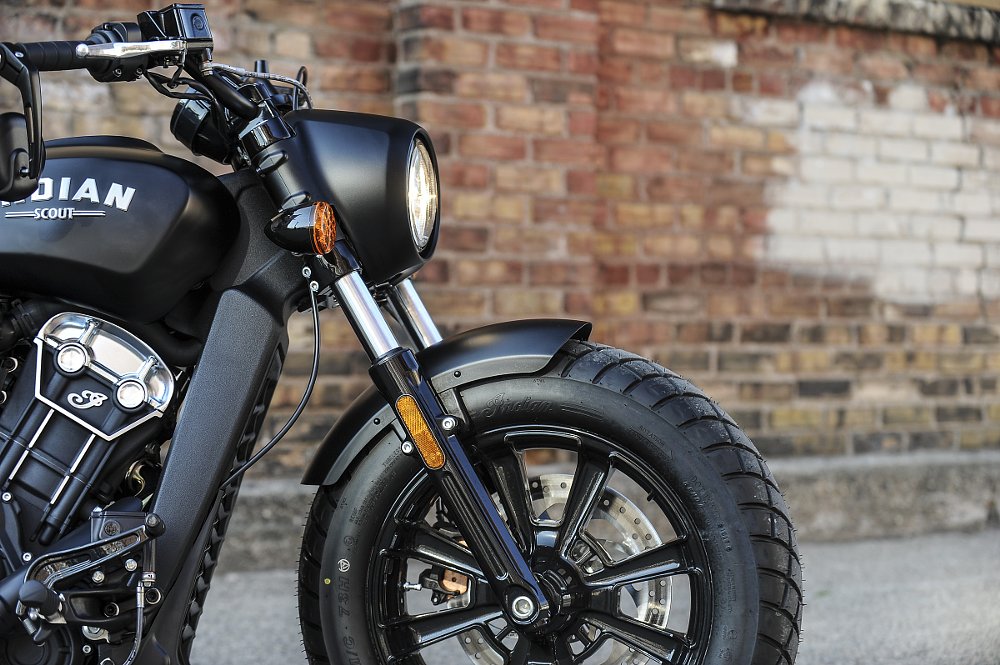
So is this just a Scout with new looks?
Yes. Looks are a personal preference, so you’ll need to decide if this fits your style. It’s been over a year since I’ve spent any time on the Scout, a bike that I really like, so I'm going by memory, but the Bobber didn’t immediately feel that different. The engine felt familiar because it’s exactly the same. Racing down country roads, I remembered how fun the Scout is.

The suspension felt similar to other bikes in this category. I didn't notice the missing inch of rear suspension travel. Cruisers in this class aren't known for having sophisticated, long-travel suspension, anyway. The pegs scrape even easier now — not surprising on a lowered bike.
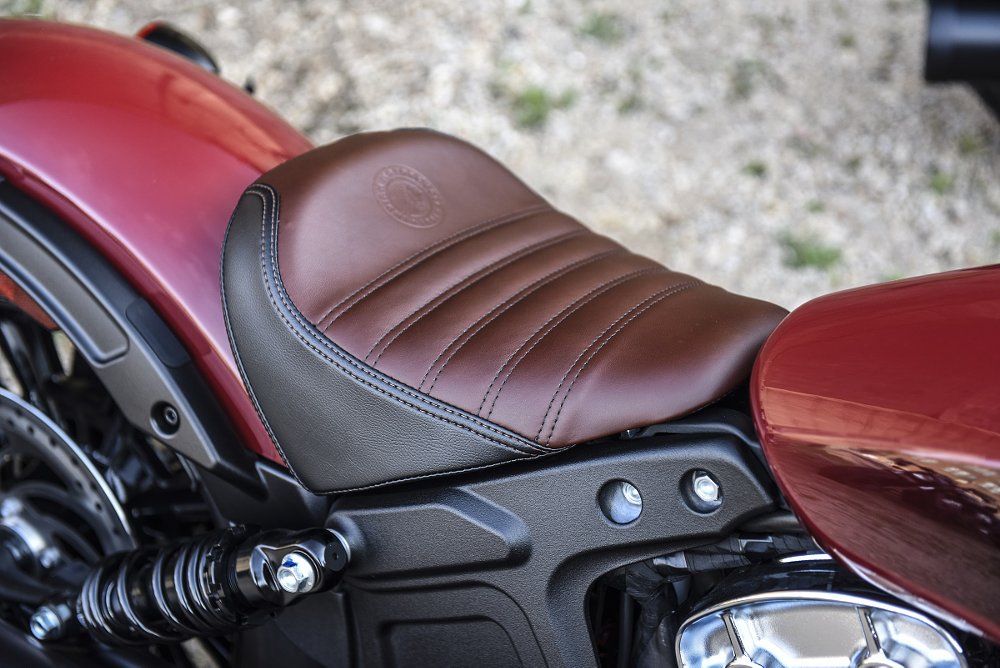
What did feel different is the new seat. While I could easily ride 100 miles on the Scout saddle, this one had me begging for a break after 20 miles. Saddles are personal preference, but most of our group was suffering after the first hour. Other than that, the ergonomics of the tracker handlebar and closer foot position felt fine.
The Scout is a great platform, a bike that is plenty of fun and easy to handle. You can find out what you need to know about how the Bobber works just by reading our previous reviews. It's that similar.
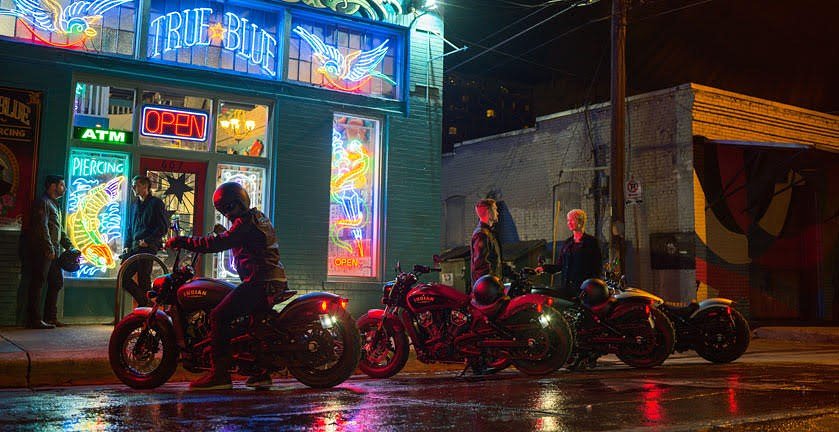
Does this bike make any sense?
It was already easy to modify the Scout, as Indian demonstrated earlier this year with Project Scout, a competition that created some good-looking bikes in the bobber category. But considering many riders in their target demographic might not want to “build” a bobber, this bike could make sense. For $200, everything comes blacked out and lowered already. Add the stage one pipe, which sounds great, swap the saddle, and off hopping to the bars you could go. Why not give riders, especially new ones, style choices — especially if that’s a key deciding factor.
The Bobber really is just a new aesthetic.

The X Games debut threw many of us for a loop. With that many young eyeballs drooling over motocross stunts and hooligan racing, we thought a performance-oriented tracker-style Scout was on the way. If not a tracker, perhaps some sort of technical advance. Indian executives have promised that the brand will be the one to move the U.S. motorcycle industry into new segments.
“We’ll be outside the cruiser, touring, and bagger segments within the next five years,” Marketing Director Reid Wilson said at another Indian press event in April.
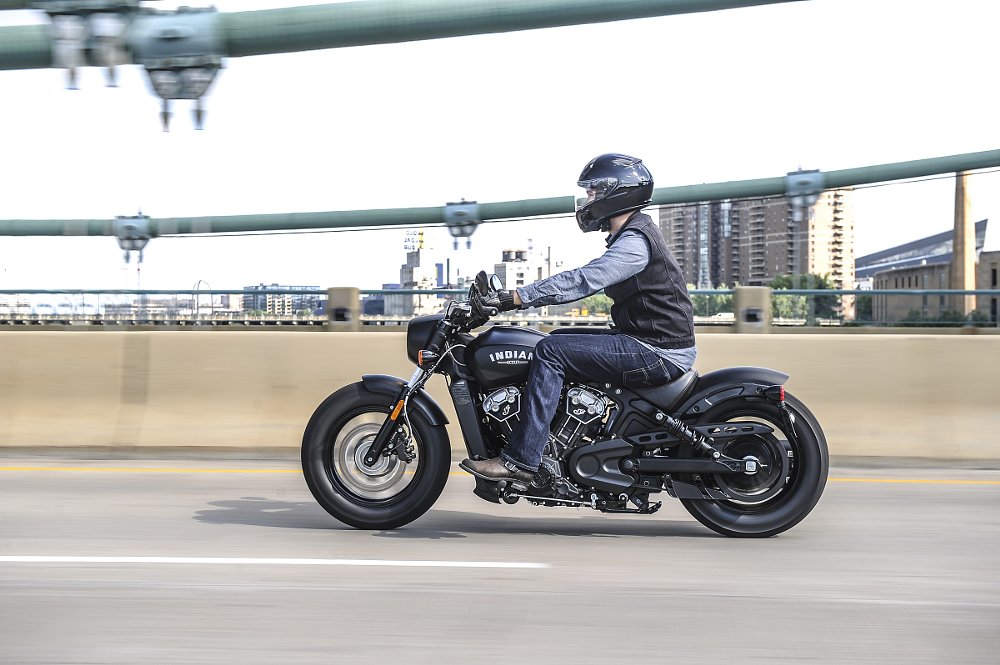
To release a bobber six months later seems a bit, well, in a different direction from that statement. This weekend, Wilson said the Scout Bobber is the “ultimate in the celebration of what motorcycling is about — a powerful engine, two wheels, and no plans of where to go.”
Which makes me wonder: Does Indian really have a plan on where to go?




